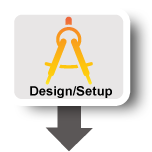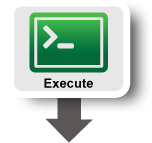| Version 5 (modified by , 8 years ago) (diff) |
|---|
NFV Tutorial: Managing a Virtual Network Function using SDN and Control Theory
Overview
This is a basic tutorial that guides you through an experiment using OpenFlow and Network Function Virtualization (NFV). It is recommended that you first read about OpenFlow and go over a basic OpenFlow tutorial on GENI. The goal of this tutorial is to give you a hands-on experience with OpenFlow, and how it can be used for NFV deployment. Using a basic topology, which contains two sources, a destination, two virtual network functions (IDS), an OVS and a controller, we will show how different OpenFlow rules can be used for NFV management. Once resources are reserved for this topology, the tutorial should take about 45-60 minutes to complete.

Figure 1: The image above depicts the network topology used in this tutorial.
Prerequisites:
- A GENI account, if you don't have one sign up!
- Familiarity with how to reserve GENI resources (we will be using the GENI Experimenter Portal as our tool).
- Familiarity with logging into GENI compute resources.
- Basic understanding of OpenFlow. An OpenFlow tutorial is here!
- Familiarity with the Unix command line.
- Familiarity with the Python programming language. We will use a controller (POX controller) written in Python for this tutorial.
- You will need to be a member of a project.
 Another version of this tutorial using the Ryu controller is also provided, and details can be found here .
Another version of this tutorial using the Ryu controller is also provided, and details can be found here .
Tools
Both of the tools are already installed on the machines where the resources are provided. If it happens not to be installed, take a look at the following tutorials to learn how to install these tools:
Open vSwitch
POX controller
Where to get help:
POX Wiki
Open vSwitch
GENI Wiki
Tutorial Instruction

|
|

|
|

|
|
Attachments (16)
- image054.gif (9.4 KB) - added by 5 years ago.
- image022.gif (2.8 KB) - added by 5 years ago.
- RRPic.png (24.6 KB) - added by 5 years ago.
- nfvPic.png (34.8 KB) - added by 5 years ago.
- snortPic.png (43.7 KB) - added by 5 years ago.
- image096.gif (13.0 KB) - added by 5 years ago.
- image092.gif (10.7 KB) - added by 5 years ago.
- PI_Controller_output.png (9.5 KB) - added by 5 years ago.
- image078.gif (10.1 KB) - added by 5 years ago.
- image076.gif (4.7 KB) - added by 5 years ago.
- image074.gif (4.4 KB) - added by 5 years ago.
- subInfo.png (37.3 KB) - added by 5 years ago.
- DNSIDDConfig.png (12.5 KB) - added by 5 years ago.
- image060.gif (30.2 KB) - added by 5 years ago.
- image068.gif (3.1 KB) - added by 5 years ago.
- failedPing.png (11.1 KB) - added by 5 years ago.
Download all attachments as: .zip
